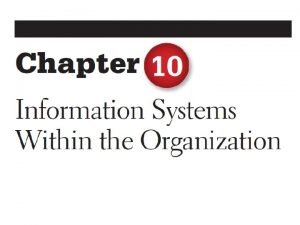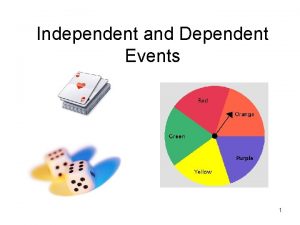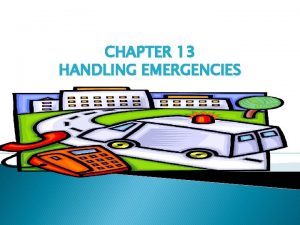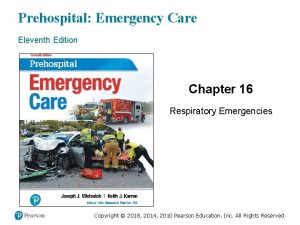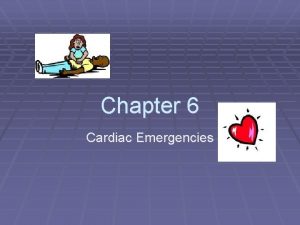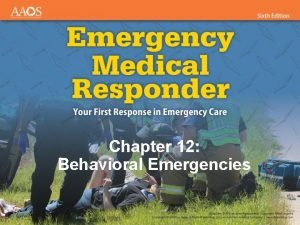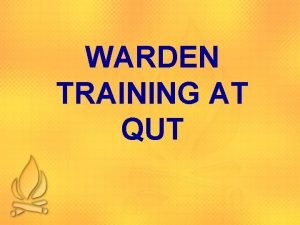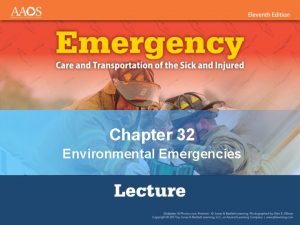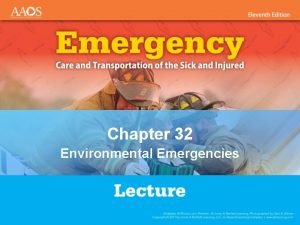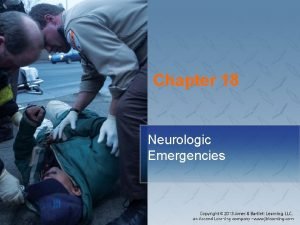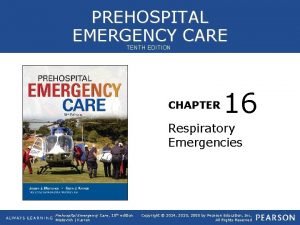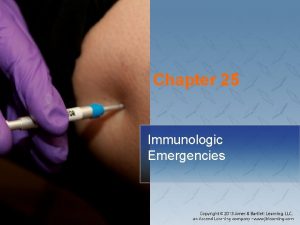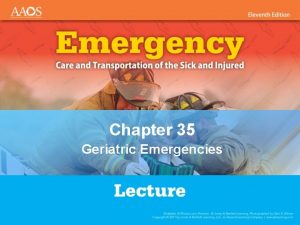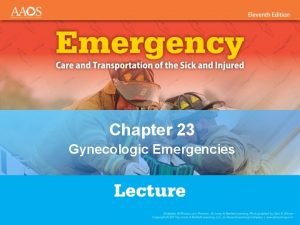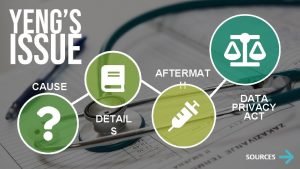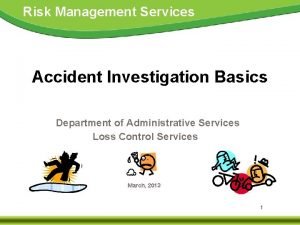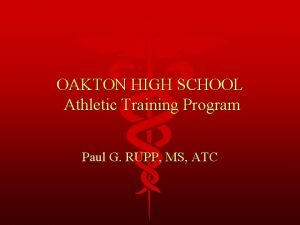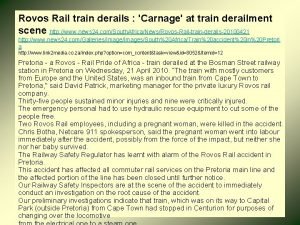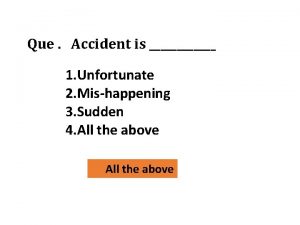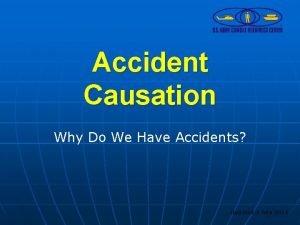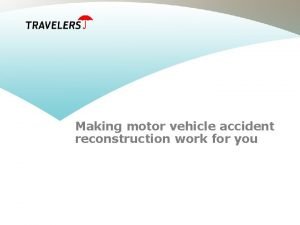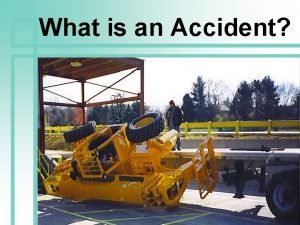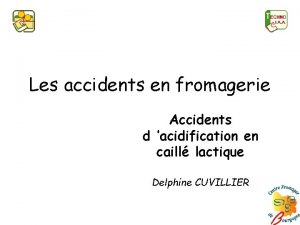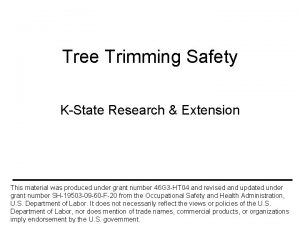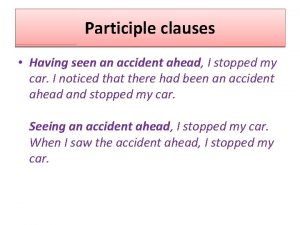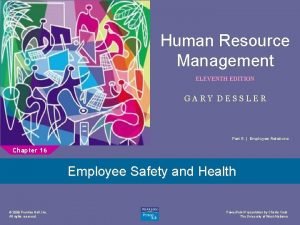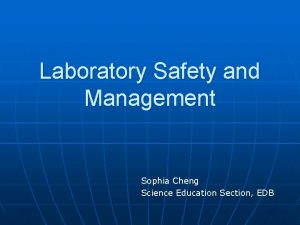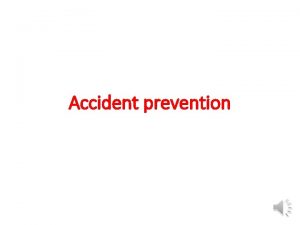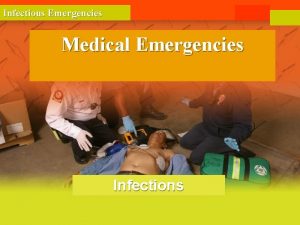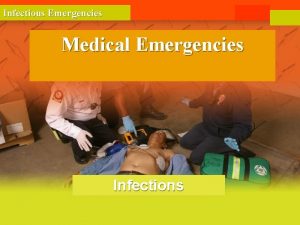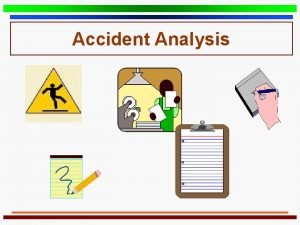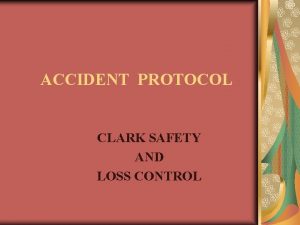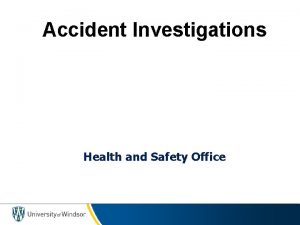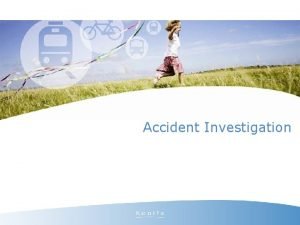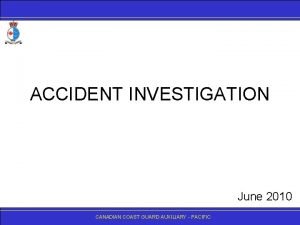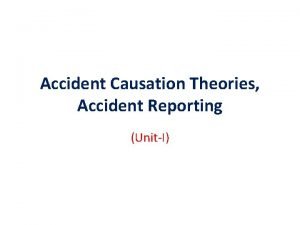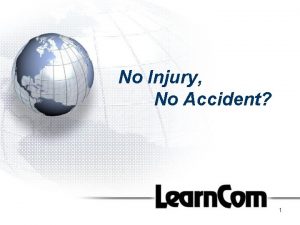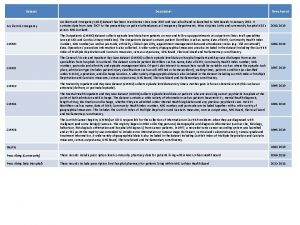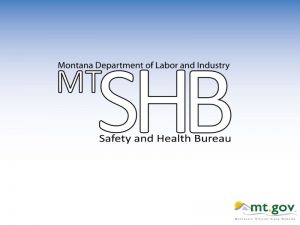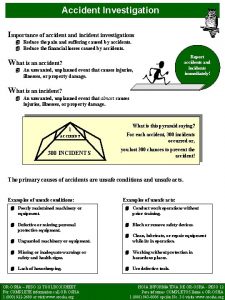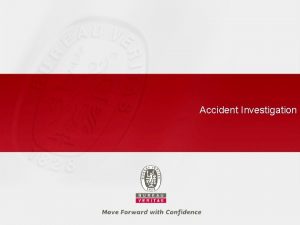Safety Emergencies Safety Emergencies accident any event that































































- Slides: 63

Safety & Emergencies

Safety & Emergencies accident: any event that was not intended to happen accidental injuries: injuries that result from an accident chain: a series of events that include a situation, an unsafe habit, and an unsafe action

Safety & Emergencies defensive driving: any event that was not intended to happen tornado: injuries that result from an accident hurricane: a series of events that include a situation, an unsafe habit, and an unsafe action

Safety & Emergencies blizzard: any event that was not intended to happen earthquake: injuries that result from an accident first aid: a series of events that include a situation, an unsafe habit, and an unsafe action

Safety & Emergencies universal precautions: any event that was not intended to happen sprain: injuries that result from an accident fracture: a series of events that include a situation, an unsafe habit, and an unsafe action

Safety & Emergencies heat cramp: any event that was not intended to happen heat exhaustion: injuries that result from an accident heatstroke: a series of events that include a situation, an unsafe habit, and an unsafe action

Safety & Emergencies abdominal thrusts: any event that was not intended to happen cardiopulmonary resuscitation: injuries that result from an accident shock: a series of events that include a situation, an unsafe habit, and an unsafe action

Safety in the Home & at School Objectives: • EXPLAIN how to stay safe in the home and at school. • IDENTIFY the parts of an accident chain. • DEVELOP safe habits.

Developing Safe Habits • Concentrate on your actions. Be extra careful when you are tired, excited, upset or in a hurry. • Recognize your limits. Don’t “try” to do something you know you can’t. • Think ahead. Think of possible risks before it is too late.

Safety in the Home 1. 2. 3. 4. 5. The Situation The Unsafe Habit The Unsafe Action The Accident The Result

Preventing Falls Most injuries from falling occur in the kitchen, the bathroom, and on the stairs. To help prevent falls, wipe up spills right away, use non-skid rugs, and keep stairways well lit and free of clutter.

Preventing Poisonings Poisoning by swallowing, absorption, inhalation or injection. Store cleaning products, insecticides, and other potential poisons out of reach of young children.

Preventing Electrical Shock Electrical items found in the home can cause serious injury or death if they are misused. • Unplug appliances that are not working correctly. • Replace broken or frayed electrical cords • Avoid running cords under rugs • Never use electrical appliances near water

Preventing Gun Accidents • The best way to prevent a gun accident in the home is to not have guns in the home. • IF guns: – use trigger locks – store unloaded – store ammo separately – gun safety training – handle gun as if loaded – NEVER point at anyone

Fire Safety • Keep stoves and ovens clean to prevent pieces of food or grease from catching on fire. • Keep flammable objects at least three feet away from portable heaters. • Remind adults who smoke never to smoke in bed or over-stuffed furniture. • Regularly inspect electrical wires, outlets, and appliances to make sure they are in proper working order.

Fire Safety Cont. • Discard old newspapers, oily rags and other materials that burn easily. • Use and store matches and lighters properly. Keep them out of reach of children. Don’t leave candles burning unattended. • Install smoke alarms on each level of the home (including basement). They should be located in hallways outside bedrooms. . Remember to check the batteries regularly.

Reducing Risk of Injury in a Fire • Leave the house immediately if possible. Call the fire department from a nearby house or a cell phone. • While you are in the house, stay as close to the floor below the smoke. • Before you open a closed door, feel it. If it is hot, find another way to leave the room. • If clothing catches fire, STOP, DROP and ROLL. STOP. Don’t run! Drop to the ground and roll to put the fire out.

HOMEWORK FIRE ESCAPE ROUTE Draw and label each level and room of your house. Label the location of each smoke detector Draw an escape route from your bedroom Label the meeting place outside of your house Label the location of the fire extinguisher Talk to to you parents about your escape route and have them sign your assignment DUE: TOMORROW


Safety at School 1. Play by the rules. Rules are meant to protect you and others. 2. Report weapons or unsafe activities. Its essential to follow rules prohibiting weapon possession at school. If you think that someone has brought a gun or other weapon to school, report it immediately to a teacher or principal. 1. Wear necessary safety gear. Working in a science lab or playing sports are two places where appropriate gear will help keep you safe.

Safety on the Road & Outdoors Objectives: • DESCRIBE ways to avoid injuries in the water and outdoors. • EXPLAIN how to stay safe as a pedestrian. • IDENTIFY do’s and don’ts of pedestrian safety. • NAME safety and traffic rules for bicycles, skateboards, and scooters.

Traffic Safety • Follow the rules of the road. • Always buckle your safety belt. • Never get in a car with someone who has been drinking or using drugs. • Don’t distract the driver. http: //www. dontdrivestupid. com/ Stacy Johnson, manager of the Utah Traffic Safety Program “Zero Fatalities” …. . that the top five behaviors killing teens on the roads today are driving drowsy, driving distracted, driving aggressively, driving impaired and driving unbuckled. Traffic accidents are the number one cause of over 32, 000 teenager deaths each year. Johnson said that teens put their own twist on risky behavior, with the latest being reading and composing text messages while driving. She encourages every student to put their phone down while on the road.

Bicycle Safety 1. ALWAYS wear a bike helmet. a. Head injuries cause 70 -80% of bicycle accident deaths. b. Wearing a helmet can reduce the risk of head injury by 85%. 2. Obey traffic signs and signals. a. Head injuries cause 70 -80% of bicycle accident deaths.

Pedestrian Safety • Cross all streets at crosswalks. Don’t jaywalk, or cross the street in the middle of the block. • Obey ALL traffic signal. • During the day, wear bright clothing. At night wear reflective gear and carry a flashlight. • Walk on the sidewalk if there is one. If there is no sidewalk, walk facing oncoming traffic, stay to the left side of the road.

Recreational Safety • Be attentive to the weather – Electrical storms – hot day – drink lots – Cold day – dress in layers • Use the buddy system – ALWAYS stay with at least one other person to cope and avoid dangerous situations

Water Safety Thousands die from drowning each year. FOLLOW water safety rules. 1. Learn to swim if you don’t know how. 2. NEVER swim alone. 3. Always use a life jacket when boating or waterskiing. 4. If you get caught in a strong current, swim parallel to the shore. When the current lessens, swim to shore. 5. NEVER dive into water unless you know it is at least 9 feet deep and free of obstacles.

Hiking and Camping Safety • Wear protective clothing. Dress in layers. Wear long pants and shirts to protect yourself from ticks. • Bring equipment and supplies. You should have a map, compass, first aid kit, flashlight, extra batteries, adequate supply of food and water. • Follow fire safety rules. Campfires only where allowed. Make sure you put out campfire COMPLETELY. Drown it with water or bury it with dirt. • Be able to identify poisonous plants and animals. Learn first aid to treat reactions to poisonous plants, insects and snakebites. http: //uuhsc. utah. edu/poison/plants/

Outdoor Sports 1. ALWAYS wear appropriate equipment. 2. Stay within ability level.

SUMMER 1. Protect yourself against sunburn and heatstroke. • Wear sunscreen with SPF @ LEAST 15, sunglasses, a hat, and appropriate clothing • Sunglasses, hat, appropriate clothing • Avoid direct sunlight during the hottest times of the day (10 AM to 4 PM) • Drink plenty of water • If you feel tired or overheated, take a break.

WINTER 1. Protect yourself against cold weather by: • Wearing layers of clothing, hat, mittens or gloves and proper footwear (insulated boots and socks)

Safety in Weather Emergencies Objectives: • EXPLAIN how to stay safe during weather emergencies. • IDENTIFY various kinds of weather emergencies and natural disasters. • ACCESS information to prepare for weather emergencies.

Hazard 1. Protect yourself against cold. • Wear layers of clothing (hat, mittens or gloves) • Proper footwear (insulated boots and socks)

Basic First Aid Objectives: • EXPLAIN how to stay safe during weather emergencies. • IDENTIFY various kinds of weather emergencies and natural disasters. • ACCESS information to prepare for weather emergencies.

First Aid • You can prevent further injury and may even speed recovery if you know what to do in an emergency. • Administering the proper first aid sometimes means the difference between life and death.

Being Prepared • Keep a list of emergency numbers close to the phone • Keep a first aid kit at home and in the car

First Aid kit • Instruments: tweezers, scissors • Equipment: thermometer, cotton swabs, blanket, cold pack • Medications: antiseptic ointment, sterile eyewash, activated charcoal, syrup of ipecac • Dressings: gauze pads, adhesive tape, adhesive bandages, triangular bandage • Miscellaneous: small flashlight, tissues, hand cleaner, disposable gloves, face mask, plastic bags

Taking Universal Precautions • Viruses such as HIV and hepatitis B & C can be spread through contact with a infected person’s blood. Steps to take to minimize contact: 1. Wear protective gloves. 2. Use a face mask or shield. 3. Cover any open wounds on own body with sterile dressing. 4. Avoid touching any object that was in contact with victim’s blood. 5. WASH hands thoroughly.

The FIRST steps Identify the Signs of an Emergency Something you see, hear or smell will alert to emergency. Take Action Before deciding what action to take, EVALUATE the situation. Protect your own safety first. Get help. Sometimes the BEST and ONLY actions necessary.

Calling for Help Dial 911. Stay calm. Describe the emergency. Give a street address, describe location. Stay on the phone until the operator tells you to hang up.

Provide Care Until Help Arrives Stay with the victim until help arrives Carefully loosen tight clothing on the victim Use a coat or blanket to keep the person warm. Or provide shade if the weather is warm – warmth/shock Avoid moving the victim to prevent further pain or injury.

Life-Threatening Emergencies Objectives: • EXPLAIN different kinds of life-threatening emergencies. • DESCRIBE how to perform rescue breathing. • IDENTIFY the symptoms of shock. • EXPLAIN how to help someone who is choking.

st 1 Degree Burn (superficial burn)

nd 2 Degree Burn (partial-thickness burn)

rd 3 Degree (full-thickness burn) • http: //www. youtube. com/watch? v=BEGle_j 62 AA

Sprains

Broken Bones

Insect & Animal Bites • Animal bite on hand

Poisoning

Foreign Object in Eye

Nosebleed

Fainting

Heat Cramps

Heat Exhaustion

Heat stroke

Choking • Choking kills more than 3, 000 people every year in the United States • When a piece of food or some other object blocks a person airway they should start clutching his or her throat, that is the universal sign for choking. • If a person is clutching his or her throat, that is the universal sign for choking. • Other symptoms include – Gasping or wheezing – Reddish-purple coloration – Bulging eyes – Inability to speak If a person CAN speak or cough, it is not a choking emergency.

Choking • http: //www. youtube. com/watch? v=k. JDpr 05 zm. B 4

Severe Bleeding Severe bleeding can be a life threatening emergency because the organs and tissues in the body are not getting enough blood or oxygen to function properly. When providing first aid always avoid touching the victims blood or wear gloves. Call 911 before beginning first aid.

1. Raise the wounded body part above the level of the heart, if possible. 2. Cover the wound with sterile gauze or clean cloth. Press the palm of your hand firmly against the gauze and apply pressure for at least 5 minutes, or until help arrives. 3. If blood soaks through the gauze or clothe, Do NOT remove it. Add another clothe or gauze pad on top of the first and continue to apply pressure. 4. Once bleeding slows down or stops, secure the pad or cloth with a bandage or other material. The pad should be snug, but not too tight. 5. Stay with person until help arrives.

Severe Bleeding • http: //www. youtube. com/watch? v=ABx. ICA d. Q 3 M 8

CPR (Hands Only CPR) • www. handsonlycpr. org

Shock Is a life threatening condition in which the Circulatory system fails to deliver enough blood to vital tissues and organs. Injury burns, and severe infections can cause a person to go into shock, as can heat, poisoning, blood loss and heart attack. Signs to watch for include: cool, clammy, pale or gray skin; weak and rapid pulse; and slow, shallow breathing. The eyes may have a dull look with the pupils dilated. The victim, if conscious, may feel faint, weak, confused, and anxious.

1. Help the person lie down quietly with feet raised slightly higher than the head. Try to keep the person as still as possible. 2. Loosen tight clothing. 3. Use a blanket, coat, or any available cover to help keep the person warm. 4. Do not give the person anything to drink. 5. Roll the person onto his or her side to help prevent choking in the event of vomiting or bleeding from the mouth.

Shock • http: //www. youtube. com/watch? v=NIroqjw zq. RA&NR=1&feature=fvwpns
 Phân độ lown
Phân độ lown Walmart thất bại ở nhật
Walmart thất bại ở nhật Gây tê cơ vuông thắt lưng
Gây tê cơ vuông thắt lưng Block av độ 1
Block av độ 1 Tìm vết của mặt phẳng
Tìm vết của mặt phẳng Sau thất bại ở hồ điển triệt
Sau thất bại ở hồ điển triệt Thơ thất ngôn tứ tuyệt đường luật
Thơ thất ngôn tứ tuyệt đường luật Con hãy đưa tay khi thấy người vấp ngã
Con hãy đưa tay khi thấy người vấp ngã Thơ thất ngôn tứ tuyệt đường luật
Thơ thất ngôn tứ tuyệt đường luật Tôn thất thuyết là ai
Tôn thất thuyết là ai Any to any connectivity
Any to any connectivity Informational probes adalah
Informational probes adalah There isn't any chicken
There isn't any chicken Objectives of transaction processing system
Objectives of transaction processing system Bridge breaks in central java killing 5
Bridge breaks in central java killing 5 Independent or dependent
Independent or dependent Newsworthy event (s) background event (s) sources
Newsworthy event (s) background event (s) sources Independent event vs dependent event
Independent event vs dependent event Event management swot analysis
Event management swot analysis Simple and compound events
Simple and compound events Sentinal event
Sentinal event Chapter 17 cardiovascular emergencies
Chapter 17 cardiovascular emergencies Chapter 28 lesson 1
Chapter 28 lesson 1 Major nutritional deficiency diseases in emergencies
Major nutritional deficiency diseases in emergencies A 41 year old man presents with slow irregular breathing
A 41 year old man presents with slow irregular breathing Chapter 13 handling emergencies
Chapter 13 handling emergencies Chapter 22 psychiatric emergencies
Chapter 22 psychiatric emergencies Psychiatric emergency
Psychiatric emergency Chapter 16 respiratory emergencies
Chapter 16 respiratory emergencies Lesson 6: cardiac emergencies and using an aed
Lesson 6: cardiac emergencies and using an aed Chapter 12 behavioral emergencies
Chapter 12 behavioral emergencies Endocrine and hematologic emergencies
Endocrine and hematologic emergencies A diver is 30 metres/99 feet underwater
A diver is 30 metres/99 feet underwater Qut security contact number for emergencies
Qut security contact number for emergencies Schistocytes
Schistocytes Environmental emergencies emt
Environmental emergencies emt Chapter 32 environmental emergencies
Chapter 32 environmental emergencies Chapter 18 neurologic emergencies
Chapter 18 neurologic emergencies Emt chapter 18 gastrointestinal and urologic emergencies
Emt chapter 18 gastrointestinal and urologic emergencies Chapter 16 respiratory emergencies
Chapter 16 respiratory emergencies Immunologic emergencies
Immunologic emergencies Gems diamond geriatric assessment
Gems diamond geriatric assessment Chapter 23 gynecologic emergencies
Chapter 23 gynecologic emergencies Yeng constantino husband accident
Yeng constantino husband accident Accident weed
Accident weed Dr raymond thal
Dr raymond thal A shocking accident theme
A shocking accident theme Bugorski
Bugorski Rovos rail derailment
Rovos rail derailment Mishappening happened
Mishappening happened Modern causation model
Modern causation model When does james gatz change his name why
When does james gatz change his name why Five actors were competing for the leading role in the play
Five actors were competing for the leading role in the play Gouge marks accident
Gouge marks accident Allseas group maritime accident lawyer
Allseas group maritime accident lawyer Conversiune prin accident
Conversiune prin accident Accident iceberg
Accident iceberg Accident fromagerie caillage
Accident fromagerie caillage 54 year old tree trimming accident
54 year old tree trimming accident Kristina vukaj
Kristina vukaj Participle clauses after conjunctions and prepositions
Participle clauses after conjunctions and prepositions Lathe accident
Lathe accident Nuclear accident
Nuclear accident Sophia cheng accident
Sophia cheng accident













